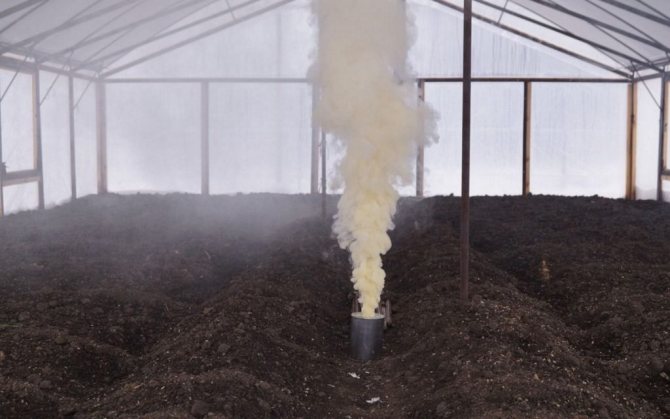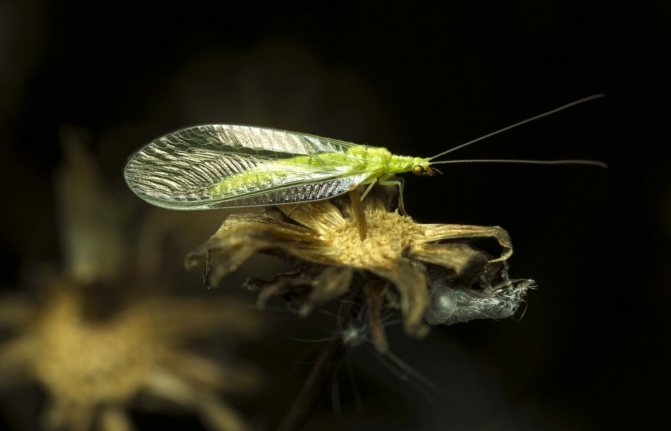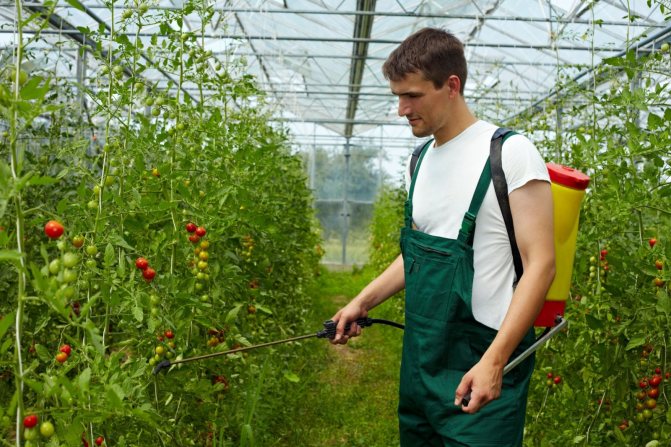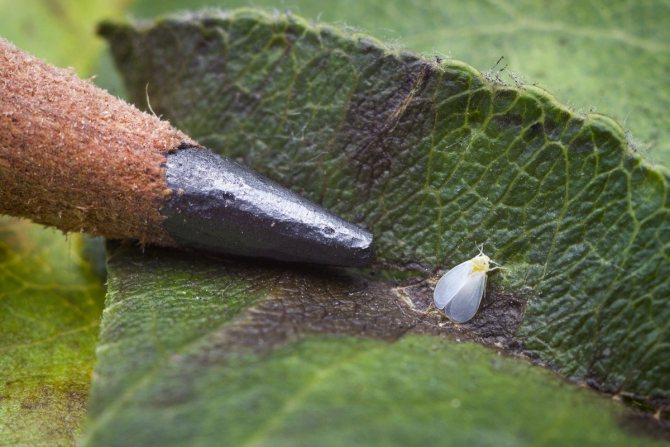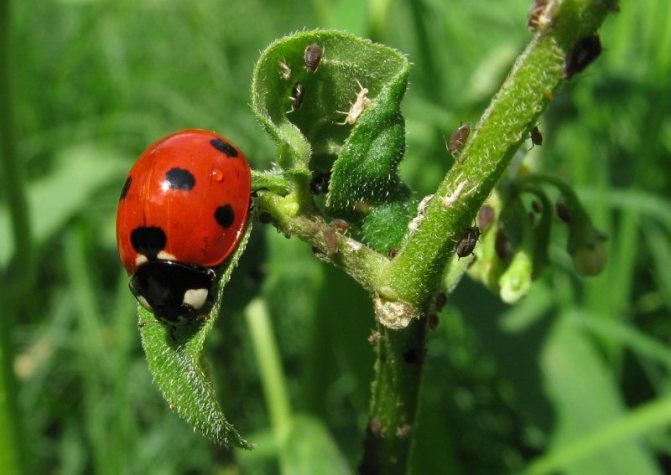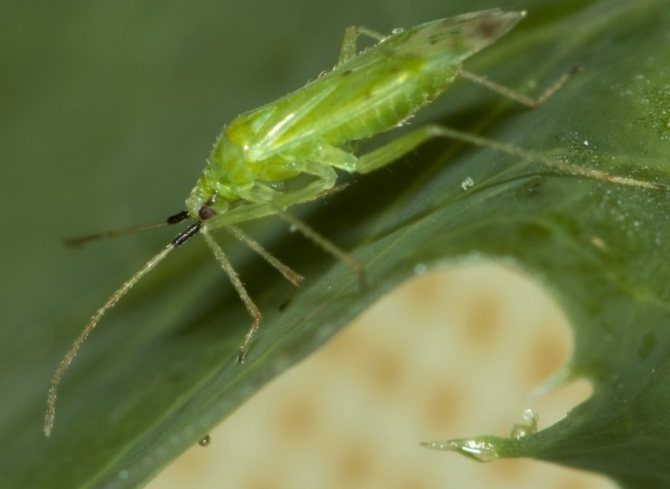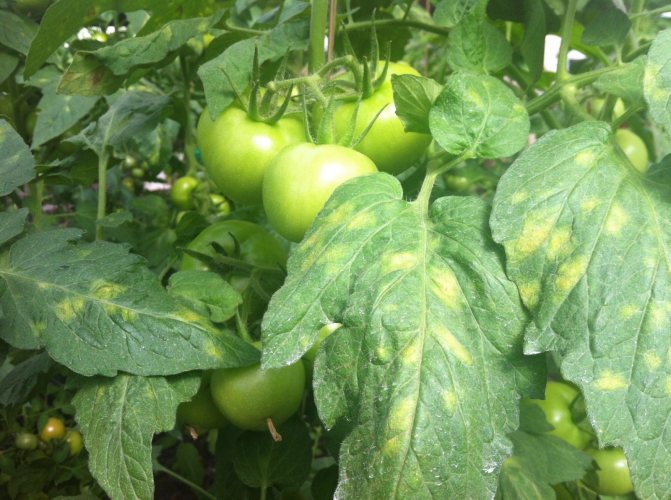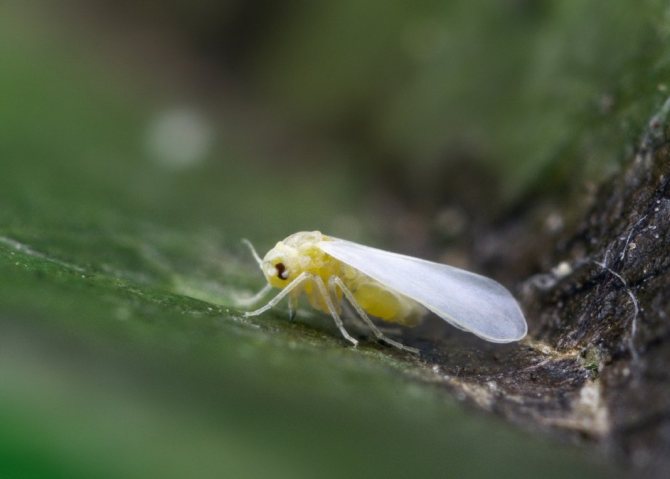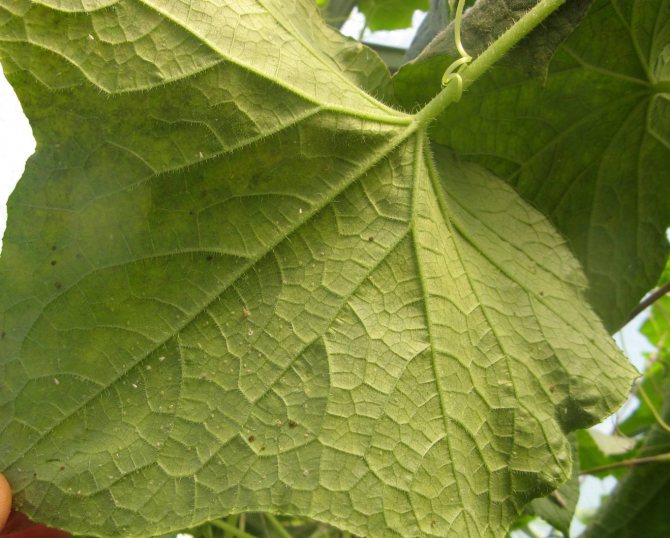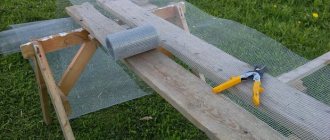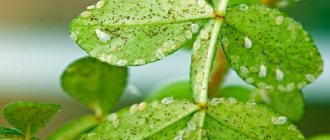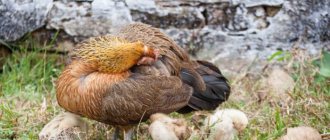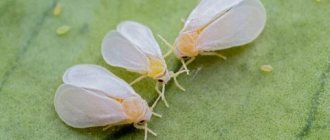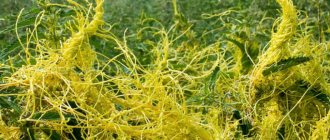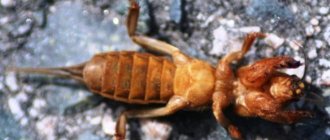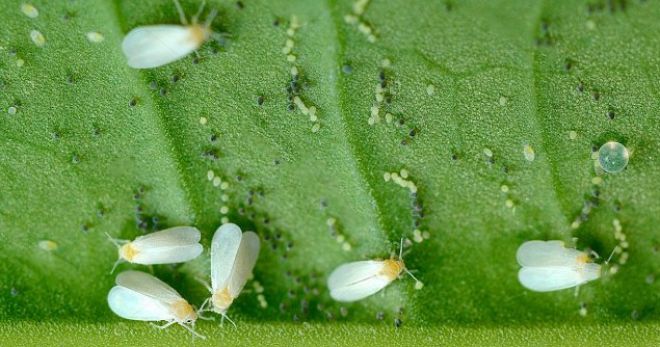
When growing vegetables, gardeners are faced with many pests. One of the most dangerous is the whitefly in the greenhouse, few know how to get rid of it completely. The insect has a complex life cycle and good immunity to chemicals. Only an integrated approach will help from this scourge.
Fighting whitefly in a greenhouse on tomatoes
First you need to eliminate adult insects that participate in the reproduction process. The following methods are suitable here:
- Washing the leaves. Before this procedure, if there are not very many plants, you can collect the whitefly by hand. Then treat the bushes with soapy water and rinse with water.
- Knock insects off plants with a jet of water.
The advantages of these two methods are that in addition to insects, sticky plaque and soot fungus are removed from the crops, it becomes easier for plants to breathe after water procedures.
Other methods include:
- Using Velcro is a common and effective way to control whitefly. For self-production, you need to take yellow cardboard and grease its surface well with petroleum jelly. Insects are attracted to the bright color, and they stick to the trap, when a lot of them stick, the petroleum jelly can be wiped off and spread on a new layer.
- Heat the rosin in a water bath, add castor oil and honey, apply the mixture to yellow or blue cardboard or plywood and spread throughout the greenhouse;
- Treat tomato bushes with an anti-scab emulsion purchased from a pharmacy. It is necessary to make a solution at the rate of 50 grams of emulsion per liter of water and process the tomato bushes well;
- Using yarrow herb can help you save an entire vegetable garden. To prepare it, you need to grind 80 grams of grass, pour a liter of boiling water and insist in a dark place for a day. Then wipe the leaves of infected plants with this solution;
- Garlic tincture - finely chop 10 grams of garlic and pour in two liters of water, leave for 24 hours in a cool dark place, and then spray the tomatoes with this solution.
- Use this trap: take a few pieces of brightly colored plastic and smear them with entomological glue. Attach the backlight to the plastic and hang the traps so that they are flush with the tops of the plants, many insects will flock and stick to the bright light and color.
Using Predatory Insects to Control Whitefly
To get rid of whitefly in a greenhouse on tomatoes, you can settle insects that feed on midges and their larvae:
- Encarsia. This hunter destroys whitefly larvae. The female encarsia lays eggs directly in them. The parasite grows with the whitefly and leaves the adult insect, which dies.
- Macrolophus bug. Shows high efficiency in the fight against whiteflies and their larvae in greenhouses with tomatoes. For 1 square meter, five individuals are enough. After two weeks, it is necessary to repeat the connection.
- Ladybug - quickly eats the whitefly. To attract them to the greenhouse, you can plant the following plants: alyssum, daisies, marigolds, tansy, yarrow.
Use of chemicals
In advanced cases, it is necessary to apply radical methods of pest control and use chemicals. They need to process not only infected tomatoes, but also nearby plants.Today in specialized stores it is possible to buy different drugs: actellic, confidor, pegasus, verticillin, fufanon, etc. In the instructions attached to each of them, you can learn about the methods of working with poison. Processing must be carried out several times until the insects are completely exterminated. Remember the toxicity of these drugs and be sure to use personal protective equipment when processing: gloves, mask, protective clothing.
The appearance of whitefly on tomatoes is easier to prevent than to eliminate later. To do this, in the fall, you need to burn the tops, dig up the soil in order to raise the larvae to the surface, and in winter they will die from cold temperatures. Remove the cover from the greenhouse or disinfect, rinse the frame with bleach. Control the climate inside the greenhouse and ventilate it regularly. With careful crop care, you are sure to be rewarded with healthy bushes and a rich harvest!
Aphids or is it a whitefly?
First of all, learn to identify the first signs of a pest in the greenhouse:
- Stickiness is felt in different places of the plants.
- The leaves are deformed, twisted and wither.
- On the inside of the leaves, you can see the larvae with a waxy coating.
- Some leaf plates of vegetable crops are covered with yellow spots, but the borders are indistinct.
And finally, just touch the infected bush - a whole flock of small white flies immediately rose and flew to another bush? They are definitely whiteflies. And, if you do not hesitate, take a closer look at one of them - is it similar to the photos below? Let's put it this way: This is a serious threat to your future greenhouse crop. And the strength of these parasites lies in the fact that there are many of them - these are hundreds and thousands of small pests that literally draw out all the juices from the leaves and stems. If you do nothing, then in a couple of days you will lose all your work.
Please note that if a black bloom is also noticeable on the sticky secretions of the parasite, then the plants are already infected with an additional sooty fungus. Such bushes can only be pulled out and immediately burned. Unfortunately.
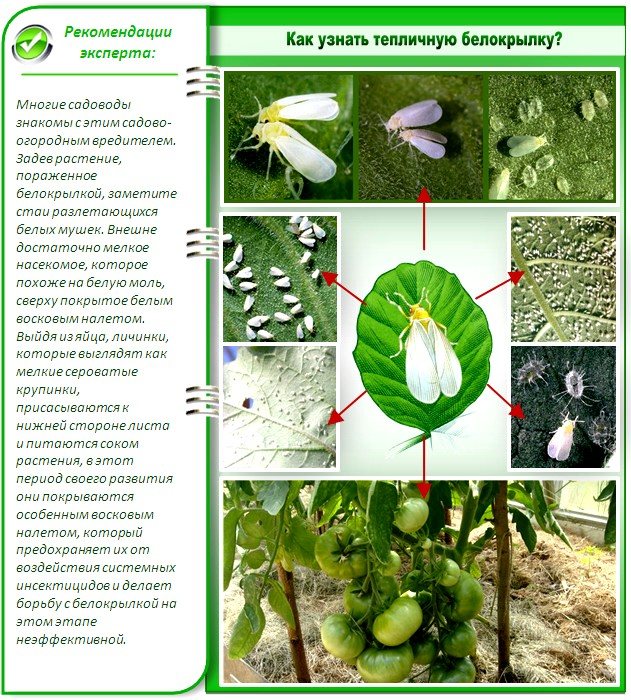

Brief description of the pest
If a whitefly appears on cucumbers, tomatoes in a greenhouse, then it is not difficult to detect it. It is a small white butterfly, barely 2 mm long. It affects not only cucumbers, flower crops, fruit, berry plantings, tomatoes, eggplants can also suffer from it.
Two types of whiteflies affect most crops:
- tobacco whitefly (Bemisia tabaci);
- greenhouse (Trialeurodes vaporariorum) - mainly affects greenhouse vegetables.
What does a butterfly and its larva look like?
The insect can move on its own paws, fly from one bush to another. The butterfly does not live long - 2-3 weeks, but for such a short period of time the female lays 100-200 eggs. Greenhouse whitefly eggs are first white, then gray.
After a week and a half, larvae emerge from the eggs, which go through 4 phases of life, mature. The female lays eggs on the reverse side of the leaves. Most of the life of butterflies and their larvae passes there.
The larvae are called nymphs. They are light, flat, not very mobile and virtually invisible to the naked eye (0.3 mm long). Their presence can be checked with a magnifying glass. They look like small yellow scales with reddish eyes. Their body is covered with thorns. Having passed to the last phase, the larva gains the ability to move on its paws. After 3-4 days, she matures and begins to lay eggs. Of half of the eggs, females are born, giving 10-12 generations per year.
Adult whiteflies in summer, usually in July, leave the greenhouse and feed on garden plants, choose weeds and stock roses. Insects return to the greenhouse again in the fall when food runs out in the open air.
The insect passes all stages of development from egg to butterfly in 25-26 days.Due to the cyclical development of the insect and its fertility, it is very difficult to fight it. Below is a detailed description of how to deal with a whitefly if it starts up in a greenhouse.
Insect damage
The size of the butterfly and its larvae is insignificant, but the insect can cause great harm. Here are the negative consequences that occur with vegetable bushes attacked by a pest:
- Larvae and adult insects suck on tissue juice. First, small yellowish spots appear on the leaves (less often on young shoots). On closer examination of the sheet from the underside, small puncture marks can be seen. Later, a large area of leaves turns yellow, dries up and falls off. As a result, the plant weakens.
- The rate of growth and development of plants slows down, while the susceptibility to unfavorable factors increases.
- If the pest parasitizes on inflorescences, the number of ovaries is greatly reduced.
- The whitefly produces a sticky, sweetish substance that attracts ants. Plants covered with a sticky substance have limited breathing capacity and look unsightly. The honeydew secreted by whiteflies is more viscous than that produced by aphids, and can significantly impede the movement of beneficial insects - the natural enemies of the whitefly.
- A sooty fungus sits on the sticky formation, secondary infection of the bushes occurs. The fungus develops on the leaves, reducing photosynthesis and transpiration. The fungus on the fruit makes it sticky and the fruit is not marketable.
- The greenhouse whitefly can disfigure ornamental plants, cause them to die off, and reduce the yield of edible plants.
- With a massive attack of insects, the bush dies.
- These insects also carry viruses.
Symptoms of lesions of cucumbers and tomatoes
The appearance of a whitefly in a greenhouse can be determined by the characteristic symptoms:
- small white midges hover over the bushes;
- dots appeared on the leaves of a whitish color;
- a sticky mass appeared on shoots and leaves;
- folding and wilting of leaves;
- the formation of yellow spots with implicit edges on the leaves;
- there are larvae on the back of the leaves;
- bushes develop poorly;
- bushes shed their foliage prematurely.
What you need to know about the whitefly


A tiny (up to 2-3 mm) butterfly from South America comes from, therefore, in our area it prefers to live on greenhouse crops. In insect shelters the most favorable microclimate is warm and humid.
Have questions? Ask and get useful advice from professional gardeners and experienced summer residents. Ask a question >>
The representative of the Aleurodid family received the name because of two pairs of whitish wings. The body is yellowish, in females it is slightly larger than in males. The lifespan of adults is about 30-40 days, during which time the female makes several clutches of eggs up to 200 in total.
The life cycle is complex, it includes several stages of development:
- larva (stages of vagrant or creeper, nymph);
- chrysalis;
- imago (adult butterfly).
The tramp is born about 0.3 mm in size, during development (about 18-20 days) it grows into a full-fledged insect. Dangerous nymphs feeding on plant juices, as well as adults, devouring foliage, shoots (see photo).


Whitefly larvae are covered with a special wax coating, which makes the pest invulnerable to most insecticides. They secrete a special sugary substance that serves as the basis for the appearance and development of a sooty fungus. In addition to the danger of destruction of plants, the greenhouse whitefly poses a threat as a distributor of serious fungal and viral infections.
On a note!
A single plant in a greenhouse can contain pests of all stages of the life cycle, from a tramp to flying adult butterflies.
The best temperature regime for an insect is from + 20ºC to + 26ºC.At higher rates, the life span of the imago is reduced; at temperatures below + 10ºC, the whitefly pest dies. But at the same time, the larvae and pupae survive the cold season quite safely, hibernating in plant debris.
Whitefly remedies in a greenhouse with tomatoes and cucumbers
To destroy whitefly in a greenhouse with tomato and cucumber seedlings, there are many means, the most famous of which are:
- Boverin
- "Fufanon"
- "Citkor"
- "Rovikurt"
- "Pegasus"
- "Actellik"
- "Tanrek"
- "Aktara"
According to customer reviews, one of the most effective and widely directed against insects is Fufanon, a Danish analogue of the Soviet Karbofos. The active ingredient is malathion. The period of protective action is from 3 to 15 days. Available in liquid form, transparent in 5 ml ampoules and 10 ml vials.
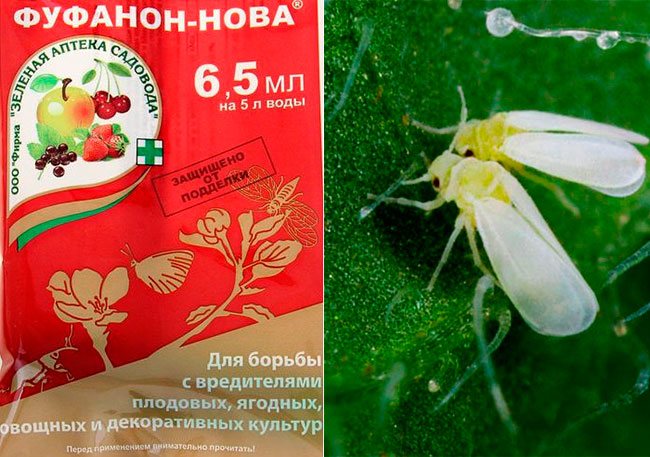

Method of application: the contents of a 5ml ampoule are diluted in 5 liters of water. Acts against the following pests: whitefly, whitefly, gall midges, weevils, ticks, leafworms, pseudo-scale insects, honeydew, moths, flies, moths, sawflies, moths, moths, scoops, aphids, thrips, worms, scale insects, and other pests.
It is best to use them on seedlings that are the weakest and most susceptible to parasites.
Prevention measures
Whitefly is difficult to get rid of, so experts in growing tomatoes in greenhouses recommend the following prevention:
- Disinfect the greenhouse and tools in spring and autumn.
- Fumigate the greenhouse in the spring before planting seedlings with tobacco sticks.
- After harvesting the last harvest of fruits, it is imperative to remove residual vegetation, burn it and dig up the soil.
- Disinfect the soil using copper sulfate. The solution is prepared based on a ratio of 200 g per 10 l of water. The procedure is carried out once every 3 years.
- Do not thicken the planting. Seedlings must be planted at an acceptable distance from each other.
- Avoid excess moisture. This contributes to the rapid reproduction of this pest. It is necessary to constantly ventilate the greenhouse room.
- Carry out preventive spraying using folk remedies or chemicals.
Did you know? The ladybug in the West in ancient times was considered a symbol of good luck.
European Catholics refer the ladybug to the insect of the Virgin Mary.Killing a ladybug is unacceptable in some cultures.
Whitefly in greenhouses needs to be noticed in time and different methods of getting rid of it should be used. If there are too many pests, then it is better to use effective chemicals; in other cases, you can use alternative methods and folk remedies.
How to deal with whitefly
How to treat plants from whitefly? The best way to do this is to use insecticides. It can be chemical or biological, at the request of the gardener. The main thing is to use them strictly according to the instructions so as not to harm the plants.
- Actellic is a remedy used against various types of pests, including ticks. This is a very strong drug that is recommended in extreme cases, if, for example, there are a lot of pests on tomatoes or other vegetable plants, and it is impossible to remove them with folk or biological drugs.
- "Aktara" is a systemic, long-acting chemical agent. It is used to treat plants by leaf or watering. To destroy the pest, only 2 treatments at intervals of a week are enough. Divorced strictly according to the instructions.
- "Confidor" is an insecticide of systemic contact action. Pests die after contact with him in just 1.5 hours!
- "Fufanon" will easily destroy the whitefly if you start using this drug in time. Only 1 ml of the drug is taken per liter of water. After dilution of the liquid, spraying must be carried out.
Interesting! If the leaves of the treated plant are pubescent, it is recommended to take a fine spray for spraying.


Whitefly Insecticides
- Aktofit is a strong biological insecticide. To destroy the whitefly, you need to dilute 4-5 ml of the product in a liter of water, then add a little soap as an adhesive and use a plant spray.
- Fitoverm. If the whitefly appears on cucumbers or tomatoes during fruiting, the use of chemicals is not recommended so as not to harm the crop. But such a biological agent as Fitoverm will not harm the crop. For a liter of water, it is enough to take 4 ml of the product and use a solution to spray the leaves.
Also good insecticides include "Verticillin", "Skor", "Inta-Vir", "Akarin", "Tanrek", "Boverin".
For the entire period of growing crops, you can carry out up to 3 treatments with insecticides from the whitefly. In addition, some preparations that are made on the basis of organic components can be used for prevention, and not only for the destruction of insects.
Features of life and reproduction of an insect - why is it important?
By clearly understanding how the life cycle of an insect occurs, you can build an effective plan for its extermination. You don't need to be a biologist for whitefly control on tomatoes to be beneficial. It is enough to understand how the pest reproduces and at what rate the pest develops, what the larvae and adults are.
The main problem of inexperienced gardeners is the desire to destroy the whitefly at an already mature age. Meanwhile, such insects have already managed to leave a huge number of larvae and their extermination without fighting the larvae will not give an effect.
So, white midges, visually having a lot of similarities with aphids, is a whitefly. It settles on the leaves of mostly young tomatoes in large groups, and lays eggs there. The larvae hatch very quickly and immediately begin to search for food. It is this moment that is considered the most favorable for the extermination of insects.


Here it is important not to miss the time when the larva stops feeding and becomes covered with a dense waxy coating-cocoon. The protection of the pupa will be so powerful that it will be almost impossible to pierce it with pesticides, and as soon as an adult emerges from the cocoon, the crop will be even more threatened due to, again, the wax protection of an already young insect.
Each new generation of pests, devastating one bush, moves on to the next, repeating the life cycle until all crops in the greenhouse die from infection.
Whitefly control methods
Many summer residents, faced with the appearance of a pest in the greenhouse, often did not even know what to do. Meanwhile, a successful result is largely determined by the promptness of measures and the correctness of actions.
Removing whitefly manually
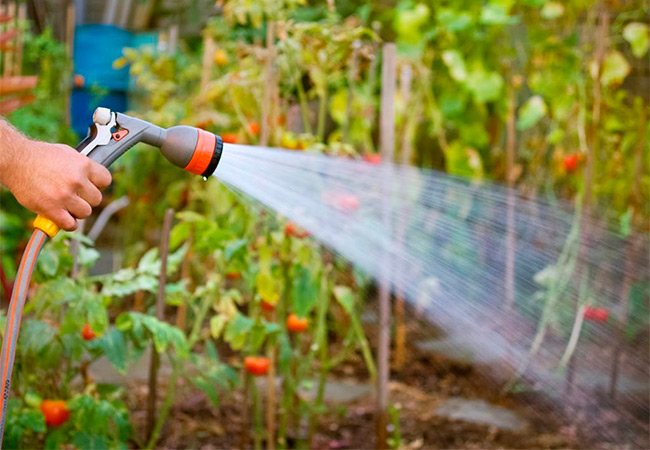

A simple and safe, but time-consuming, way to remove clutches of eggs, larvae from the underside of the leaves is to gently clean them with a damp cloth or hose. After that, it is recommended to wipe the surface with a solution of laundry soap.
Application of fixtures
Whitefly traps were first tried in the United States. The insect is attracted by bright surfaces, so cardboard, wooden or hardboard boards are painted yellow for bait. Then a sticky layer is applied and the traps are hung in the shelter.
Pests attracted by the bright color fly up to the baits and stick tightly to the surface. Rosin is used as a sticky substance for self-production.
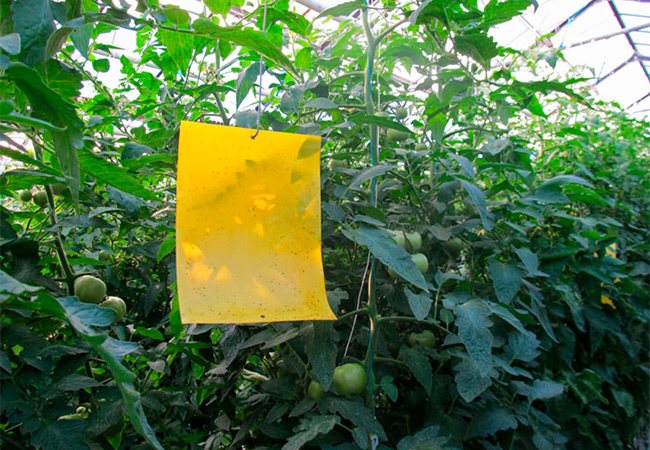

Smoke bombs, well-known moth pills, fumigators also help to cope with the pest from improvised means.
Folk remedies
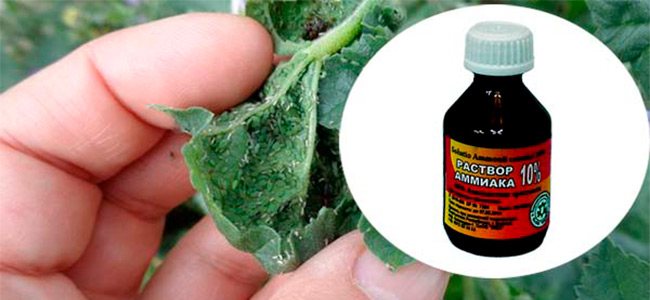

In small colonies of the pest, various decoctions or herbal infusions are used to treat plants.The "advantages" of this method are safety for humans and beneficial insects, ease of preparation.
Come to the rescue:
- onion peel decoctions;
- infusions of wormwood, yarrow, dandelion (100 grams of herbs are taken per liter of water);
- infusion of garlic (0.5 liters of boiling water is poured into the crushed head, infused for 4-6 days, a teaspoon of concentrate is diluted per liter of water);
- infusion of ash (a glass for 5 liters of water).
Spraying plants with an ammonia solution helps quite well in greenhouses: a spoonful of the drug for 9 liters of water. It is recommended to apply before flowering crops.
Biological agents


In large greenhouse farms, its natural enemies - encarsias - help to fight the insidious butterfly. In each larva, the predatory ichneumon lays an egg; in total, the female can neutralize up to 45-50 adults in this way.
Selflessly fighting the whitefly and the useful bug macrolophus, the well-known ladybug, lacewing.
To attract ladybirds and lacewings, calendula, dill, coriander, fennel, cosmea are planted near the greenhouse.
Insecticides
In case of large-scale "capture" of landings by the whitefly, it is necessary to use chemical agents. When choosing insecticides, take into account the growing season of plants, dosages, and the waiting time after treatment.


A good effect was shown by drugs:
- Teppeki - produced in granules, it is distinguished by its reliability and fast action on the pest;
- Aktara - based on the substance thiamethoxam, used for spraying and watering plants under the roots;
- Confidor - contains imidacloprid. The pest dies about 1.5-2 hours after spraying. In the greenhouse, a single treatment of plants is enough.
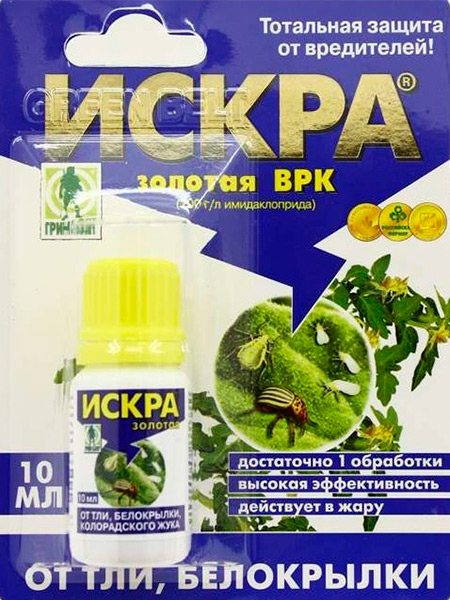

Gardeners use the Spark line of products - Bio, Double effect, Gold. The population can be destroyed in one spray. Planting protection - up to 30 days.
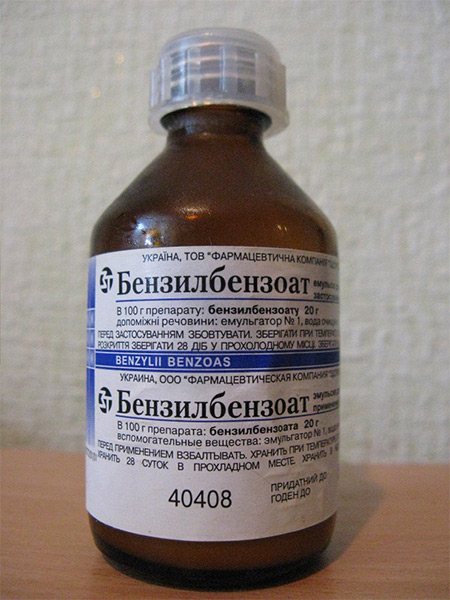

The summer residents appreciated the remedy for the whitefly benzyl benzoate, used against the itch mite. Pour 30 ml of the drug into a liter of water, stir and gently spray tomatoes or cucumbers.
Gardeners and special insecticides, inhibitors, disrupting the process of chitin synthesis, as well as hormonal agents are used. Among them:
- Appleoud - contains buprofezin, which blocks molting in whitefly larvae, which causes the insect to die;
- Admiral is a hormonal drug that causes sterilization of adults, developmental abnormalities and destruction of the whitefly.
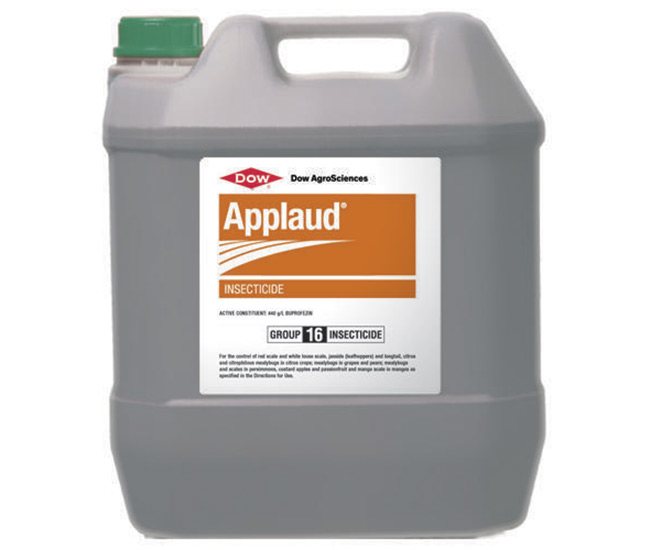

Among the advantages of Apploud is the absence of harm to humans, animals, bees and fish, insects have no resistance to the drug, a significant period of protection - up to a month
It is also important that when using the product, beneficial insects do not die, therefore, complex treatments can be carried out: spraying plants with Apploud and releasing encarsia against the whitefly
There are many ways to deal with the dangerous whitefly butterfly, so each summer resident can choose the options most suitable for a particular situation. But it is best to try to follow the rules of agricultural technology and prevent the appearance of a pest in the greenhouse.
Mechanical removal of whitefly
Mechanical methods are considered the safest, but they are time consuming and have a short duration. This includes collecting moths by hand. You can also hose down plants by knocking down butterflies. Washing the stems and leaves with a solution of laundry soap is often used.
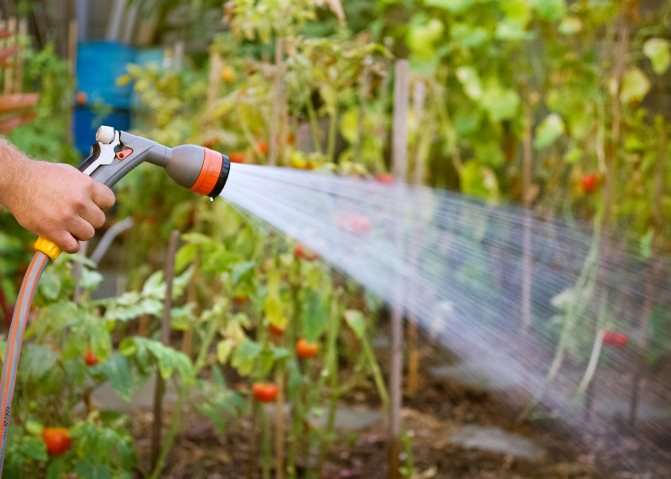

Complex treatment of plants will be more effective. First, rinse them thoroughly with a hose to shoot down all the butterflies and larvae. Then treat each leaf with soapy water.
If a large number of flying individuals are observed in the greenhouse, then you can use a household vacuum cleaner. It will help to quickly collect most of the individuals.
Such whitefly remedies in the greenhouse should be used when there are few plantings and they are minimally affected by the pest.They are able to improve the well-being of plants, but they are not highly effective. It is almost impossible to manually remove all butterflies and their larvae, and the remaining ones will return to the leaves of crops in a few days.
You can try to get rid of the pest with folk remedies, which are quite effective and more harmless than chemicals.
- Pour dried orange or lemon peel (80 g) into 1 liter of cold water, leave for 24 hours. Mix the finished infusion with soapy water (2 tbsp. L.). The finished product must be treated daily for 5 days on plant leaves. The shelf life of the ready-mixed mixture is 3 days. Therefore, you must remember to prepare a new one. Treatment with this compound will also help to remove aphids in a polycarbonate greenhouse.
- Grind dandelion roots and leaves (40 g of each component), add water (1 l) and leave for 3 days. All plants should be sprayed with a strained infusion. The next time spraying is carried out after 1 week. It is enough just to carry out 2 procedures.
After it has been possible to destroy the whitefly, measures should be taken to protect the greenhouse from its re-entry there. It is recommended to plant tansy around the perimeter, the smell of which repels the pest.
How to get rid of a pest on onions
Onions are one of the traditional and common garden plants. Like other plants, it is also susceptible to attack by pests.
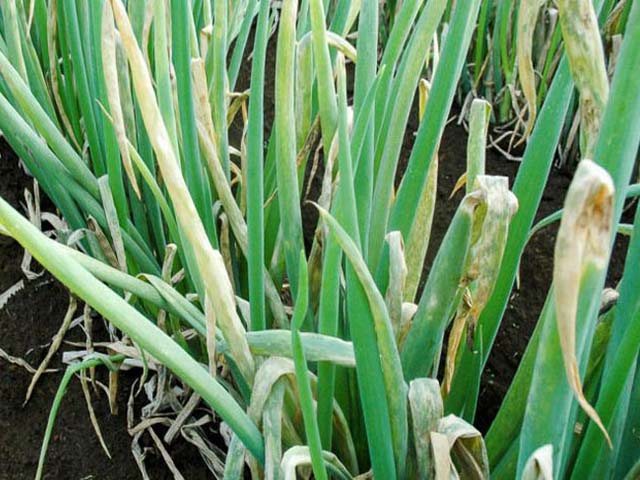

All the methods described earlier are also good for killing harmful insects on onions. In addition, you can also prepare a citrus infusion.
To do this, you need dry orange and lemon peels. Zest in the amount of 50 g is poured with a liter of water. It is insisted for two days. And after this period, two tablespoons of the solution with laundry soap are added to the solution. Plantings are processed within five days by simple spraying.
And, of course, do not forget about the use of various chemicals.
This method is good when there are a lot of pests. In this case, only drastic measures will help, aimed not at scaring away, but at destroying insects. When using chemicals, it is recommended to add a little soap solution or shampoos to them so that the substance adheres better to the treated plants.
Whitefly Damage
The pest butterfly is very dangerous. She feeds on plant sap, absorbing it in large quantities. After each "meal", punctures remain on the surface, through which infection can penetrate. Such wounds also prevent photosynthesis from taking place normally.
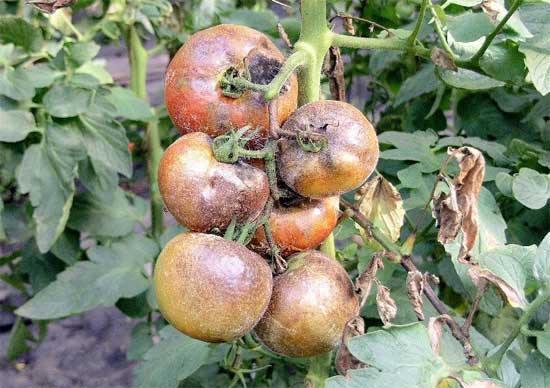

With a small number of insects on tomatoes, their growth slows down. If you do not take action, the plant will begin to dry out, wither and eventually die completely.
Note! Whitefly poses a double danger to gardeners. Not only is she a pest herself, but also a carrier of such serious diseases as jaundice, necrosis, curly leaves, chlorosis is.
As a result of its vital activity, the whitefly emits a cloudy sticky liquid that covers the affected plant and creates an ideal environment for the development of a variety of pathogenic bacteria.
Preventive measures
When growing greenhouse crops, it is often not enough to kill the whitefly once. It is necessary to provide for a number of measures to prevent a repeated attack by the pest.
Below is a list of essential measures to reduce the risk of a re-attack by the whitefly on greenhouse plants:
- it is necessary to regularly check for the presence of pest nymphs the soil, materials, equipment used in the cultivation of cucumbers, tomatoes;
- after completing the collection of products, you need to collect all the remains of plants, burn;
- while vegetables are growing in the greenhouse, it is desirable that glue traps are constantly hung;
- the room must be kept clean of weeds;
- during the growing season, the soil is loosened several times;
- it is strictly forbidden to keep the compost heap in the greenhouse;
- autumn soil disinfection is recommended.
The small white-winged midge is a serious pest of greenhouse crops that can carry off most of the crop. The fight against an insect must be started immediately after the first signs of its presence are detected.
Preventive measures
Despite the many methods of dealing with the pest, it is still better to simply prevent its appearance on tomatoes.
To do this, you should adhere to the following preventive measures:
- Avoid the appearance of runny, nettles, wood lice on the garden plot. These plants attract the whitefly.
- Monitor the air temperature in the greenhouse. The best option is + 15 ° C. A higher temperature becomes a favorable environment for the life of the insect.
- Ventilate the greenhouse in a timely manner in order to avoid an increase in air humidity.
- When planting a tomato, keep the required distance between seedlings so that there is no thickening. So, on 1 m² only 4 seedlings can be planted according to the scheme: 50 x 50 or 70 x 30.
- Carry out pinching of plants in a timely manner.
We advise you to learn how to get rid of aphids on tomatoes.
When buying seedlings, it must be carefully considered: larvae can hide under the leaves.
The preparation of a garden plot for planting a tomato should be started in the fall: the soil is cleaned of tops, fallen leaves, and the soil is loosened.
The greenhouse in which the tomatoes will be planted must be well frozen in winter: it must be opened when the air temperature drops below -10 ° C (-15 ° C).
Aphids can start on indoor flowers and only then move to seedlings, if you grow them on the windowsills yourself.
Before planting tomatoes in the greenhouse, thoroughly disinfect it (use disinfectants - potassium permanganate, copper sulfate) and paint the construction details. The pest can hide in the greenhouse crevices. Take care of good ventilation of the room.
You shouldn't fertilize the soil with compost.
Video: Another way to get rid of the whitefly
Do you still think that the most important thing in growing tomatoes is to prepare the site and plant the plant? No and no again. The culture must be constantly looked after, protecting it from pests
Otherwise, the harvest can not be expected: it can be destroyed by an inconspicuous whitefly - a small moth. With properly organized care and adherence to preventive measures, insect attacks can be fought off almost painlessly.
Reasons for the appearance


This pest is attracted by high humidity and high temperatures. For this reason, the whitefly is a frequent visitor to greenhouses. In the greenhouse, the whitefly feels comfortable at any time of the year. At a temperature of -10 degrees, this pest dies, but the eggs do not die and can be in this state for a long time, waiting for comfortable conditions.
Insects thrive in greenhouses where there is poor ventilation and where plants are close to each other. Improper planting of plants leads to stagnation of moisture and active reproduction of the pest.
Control methods
Getting rid of the ubiquitous whitefly is difficult as its population grows rapidly throughout the summer. Therefore, it is necessary to fight against the small dirty trickster systematically during the entire growing season of tomato bushes, competently using chemical, biological, mechanical and, of course, folk methods.
Biological methods
The safest and most effective methods, which also do not require large investments. Why is the whitefly not very common outdoors? The answer is simple: because in unprotected areas, it is itself endangered. God loves to feast on her
ladybugs, lacewings and other predatory insects.It is difficult for them to get into the greenhouse, and therefore the whitefly feels at ease there.
If you want to get rid of the annoying midge as soon as possible, then it is enough to add its biological enemies to the greenhouse - a dozen ladybirds (or other insects, such as macrolophus bugs, ecrasia, wasters), which will quickly overfill all flying individuals.
For a more sophisticated hunt, an encarzia predator is suitable, which will "solve the problem" with the young offspring of the whitefly. He lays eggs directly in her larvae, and then feeds on them. All that remains is to get rid of the adults.
Advice!
Do not put cow dung under the tomatoes - it makes the soil fertile for various pests to settle in it.
Fumigation of the greenhouse is a good help in pest control. It is carried out during the preparation of the greenhouse for sowing. Various mixtures are prepared for processing. Fumigation means include:
- tobacco checker;
- a candle made of sulfur;
- smoke bomb.
Such manipulation allows you to get rid of pests of all ages.
Traditional methods
The use of folk remedies is often effective in cases where the whitefly has just appeared and did not have time to postpone offspring. For these purposes, tomatoes are sprayed with various decoctions and infusions of herbs that the insect does not tolerate. In addition, they are absolutely harmless to plants and humans; they can be used several times per season.
One of the "tasteless" remedies is an infusion of garlic or tobacco. Frightens off the insect and the smell of yarrow on the leaves of a tomato bush.
A mixture of dandelion (roots) or aloe, caught on tomatoes, also disgusts the whitefly, and it flies away forever in search of new food. Well, everyone's favorite soap solution will cover the leaves with a barely noticeable film, which will reliably protect the tops from various pests.
Advice!
Before processing plants, it is necessary to remove plaque and adult moths from the greenery.
Mechanical methods
They are considered additional, but, as proven by practice, they work very effectively. If various flying animals have just started up in the greenhouse, then you can collect them "manually", or rather on sticky traps (fly sticks or cardboard baits made with your own hand with the addition of a sticky layer - honey)
Bright plates hung in different parts of the greenhouse will attract attention and "catch" pests. All that remains is to remove the affected fragments from the tomato and burn them outside the greenhouse
If clutches of eggs are found, they can be removed with a sponge moistened with soapy water.
Fact!
Studies have shown that insects are attracted to blue and yellow colors. Therefore, all the baits are made in this color scheme.
Chemicals
And finally, if all other methods have not shown the proper results, heavy artillery is used
Chemicals are very effective in the fight against greenhouse pests, but at the same time they are toxic, and therefore they must be used carefully and only before the tomato begins to ripen. Otherwise, poison will fall on the fruits
Note!
Chemical treatment is stopped 21 days before harvest.
Basically, all insecticides help to cope with several types of insects at once. So,
for example, drugs "Aktellik", "Malation", "Aktara", "Tsipermethrin", "Iskra-M", "Talstar" also save from bedbugs and aphids. The well-known targeted drugs also include: "Verticillin", "Confidor", "Rovikur", "Mospilan", "Pegas", "Fufanon". In case of severe damage by bloodsuckers, the treatment is repeated 2-3 times, but only according to the instructions. Reckless use of chemicals can lead to crop damage.
From known means the best aerosols are "Kra-Deo", "Super".
In addition to chemical preparations, such fumigators as Biotlin and Warrant can cope with whitefly.
Traps


Another mechanical method of destroying the pest is the use of special traps.They look like strips of bright color with an adhesive coating. You can buy ready-made ones, for example, ARGUS, which help get rid of aphids, flies and whiteflies.
You can also make traps yourself. As a base, you should use thick cardboard, plywood or hardboard. It needs to be painted in a bright yellow or blue color - the most attractive to pests, so it is most effective. Then a sticky mixture is prepared in a metal container:
- Melt the rosin in a water bath.
- Stir in petroleum jelly, castor oil, honey. All components are taken in the same quantity.
- When the mass becomes homogeneous, it must be cooled.
The resulting composition is applied in an even layer to the base. To defeat the butterfly, you need several traps, placed at the rate of 1 for every 10 square meters. m. greenhouse area. A large number of pests adhere to it very quickly.
It is economically viable to make traps from plexiglass and plywood. These materials can be easily cleaned with a soapy solution and can be reused several times.
Some gardeners believe that placing a light bulb on a trap increases its efficiency dramatically.
There is a trap that is advised to be used at night. She will help to catch those individuals that were not caught during the day. It is based on a box (box) into which an electric light bulb painted in bright orange or yellow is mounted. Holes are made at the level of the lighting fixture. At the bottom of the box, a container with water is installed under the light bulb. Insects run towards the light, fall into the box, cannot get out of it. They fly inside and burn themselves against a light bulb, then fall into the water. They cannot swim, so they cannot get out.
As a last resort, you can hang fly sticky tapes in the greenhouse. They will be able to catch some of the butterflies, although their effectiveness is lower than that of special traps.
Control methods
If you were unable to protect your plantings from these pests, then you can try to destroy them using various methods that are quite effective and have been used by experienced gardeners for a long time.
First of all, you can resort to a mechanical method to get rid of whitefly on tomatoes in a greenhouse. To do this, you can use the following methods:
- Rinse the leaves from below with a solution of laundry soap and then rinse with clean water. Thus, it will turn out to wash off the sticky plaque and larvae;
- Tear off affected leaves;
- Collect already adult whiteflies using a handheld vacuum cleaner.
Although these methods are the simplest, they do not give a 100% guarantee against pests and only temporarily reduce their number.
Another way to make the whitefly disappear on tomatoes in the greenhouse is to destroy it by other insects, which in turn do not harm either humans or plantings:
- Buy an insect called encarsia and place it at 20 per square meter. This "enemy of whiteflies" will very quickly find its target and lay its eggs, which will cause the destruction of the larvae;
- Use a special preparation "Verticillin BT". This fungus leads to the death of the parasite insect, without causing harm to plants, animals and humans.
Of course, there are a number of folk recipes that have proven to be effective. However, it is worth noting that they can only help if they detect insects at an early stage, while they have not yet had time to spread en masse. The following solutions are used to spray the affected areas of plants:
- Garlic tincture (grate a few cloves, pour 0.5 liters of water and let it brew for a week), diluting a teaspoon of which in a liter of water before spraying;
- Yarrow tincture (100 grams of dry product to insist for 4-5 days in a liter of water);
- Dandelion tincture (60 grams of roots and leaves are infused in a liter of water for a couple of hours);
- Lemon tincture (100 gr.the crusts are poured with water for a day, 60 ml is added. soap solution).
But you need to remember that whitefly on tomatoes or cucumbers in a greenhouse multiplies very quickly. Therefore, in order to achieve the maximum effect, one should not neglect modern chemical preparations, which will ensure not only its complete destruction, but also preserve their effect for a long time. Remember that when using chemicals, you must strictly follow the dosage indicated in the instructions for use and do not forget about safety precautions. These funds (Aktellik, Fufanon, Iskra, Admiral, Fitoferm, Confidor, etc.) are most effective at the initial stage of infection.
Why is the whitefly dangerous?
The pest is native to South America, so the humid and warm climate of the greenhouse is ideal for this insect. Whitefly prefers to settle on tomatoes, cucumbers, eggplants and parsley. These plants provide her with the necessary nutrition and allow her to reproduce. A whitefly in a greenhouse on cucumbers can be found on the inside of the leaves where it lays its eggs. Their number varies from several dozen to hundreds. In just a year, one adult insect can leave 15 generations. At the same time, it calmly hibernates in the remains of crops and the upper layer of the earth.
The butterfly thrives best in greenhouses where there are many plants planted close to each other. In such conditions, the ventilation effect is minimal, and the humidity and temperature are usually always high. Such an atmosphere is most preferable for the pest and contributes to its reproduction and rapid development. The favorable temperature for the whitefly is +22 degrees and above.
If you miss the moment and do not start to remove the pest on time, then the death of plants and crops is guaranteed. Adult whiteflies instantly eat the leaves of the plant. The larvae feed on the sap of the plant, drawing amino acids from it. Which weakens it significantly. The whitefly in the greenhouse also does another harm: it is a carrier of various viruses.
What to do if a whitefly appears? You need to start fighting it right away. If you miss the moment and wait for the larva to become a cocoon, then getting rid of the pest will become almost impossible. At this stage of development, the insect acquires a natural armor that protects it even from the effects of chemicals.


Overview of whitefly control methods
So, today there are such types of struggle:
Option # 1 - mechanical methods
These are the most harmless measures. We just take and collect insects by hand, knock them down with water from the watering hoses and wipe the stems and leaves with soapy water. The latter, by the way, will also wash away honeydew. But keep in mind - you can't catch all the insects, and downed wet moths still crawl to their food anyway. Although the harvest, I must say, will become easier for a while, of course.
Another modern method is with yellow or bright blue sticky traps. On them, by the way, you will immediately see how much of this muck is already in the greenhouse. Why this color? It is most attractive to pests. You can also hang up a regular fly tape as a last resort. But it is better, of course, to make a high-quality trap:
- Step 1. Prepare petroleum jelly, thick paper, rosin and castor oil. We mix.
- Step 2. In a water bath we heat the rosin and add honey, petroleum jelly and castor oil in equal parts.
- Step 3. The resulting mixture is cooled and applied to a paper base.
- Step 4. We hang the finished tapes throughout the greenhouse.
Ideally, if you take thick plywood for the base and paint it blue or yellow. So cover it with a sticky adhesive. Are there a lot of whiteflies? Wash off with soap and reapply. It's that simple!
Option # 2 - biological methods
The biological method is also interesting: we will use beneficial insects.For example, lacewings and ladybugs are capable of quickly destroying pests. Another way is to make a special herbal infusion.
Recipe number 1:
- Grind the head of garlic and fill it with half a liter of water.
- Let it brew for about a week.
- We dilute the finished product: 5 g per 1 liter of water.
- We spray all the plants in the greenhouse.
Recipe number 2:
- Grind 40 g of dandelion rhizomes and 40 g of leaves of the same plant and fill with 1 liter of water.
- Let it brew for several days.
- We filter and spray all affected plants with the resulting solution.
- After two weeks, we repeat the treatment.
Recipe number 3:
- Pour 80 g of crushed yarrow leaves with one liter of water.
- We insist for two days.
- We filter and use a sprayer to spray on vegetables occupied by pests.
Another biological method of fighting is the cultivation of ... parasites for the parasite. This is done like this: we purchase a test tube with encarzia and hang its contents throughout the greenhouse in small paper bags or plastic cups. The distance between the points is from 3 meters, in the end there should be about 15-20 individuals per square meter. The search ability of this small insect is excellent - it will find a pest at a distance of even 20 meters! The parasite will lay an egg directly in the warmth of the larva, and the larva will turn black over time. A new insect will already emerge from it - inc ar im. Just do not treat the greenhouse with chemistry before this. Interestingly, sometimes it is enough to plant a decorative pimzha in a corner - and the whitefly also escapes!
Option # 3 - chemical methods
Of course, for a greenhouse, chemicals are not the best option. But if things are really bad, you will have to use insecticides. Take special remedies for sucking pests: Actellic, Pyrmethrin, Malathion, Aktaru, Neudosan or Cyermethrin. And in order for the preparations to stick better to the plants, add a little laundry soap to them, after rubbing it on a grater.
Particularly effective is the drug Biotlin - a systemic poison, from which the insect dies instantly. Good reviews in terms of combating this scourge are also about the drug KRA DEO SUPER - this is a special aerosol that needs to be sprayed over everything at night. But keep in mind that insecticides will only be effective when the insects themselves are in the adult or larval stage. If you are late, the chemicals will be useless.
The most extreme case, if nothing helps at all - after harvesting, remove all the tops, disinfect the soil and set fire to several sulfur sticks for the night. After that, remove the entire topsoil - this is where the larvae are hiding. Usually after that, the whitefly disappears forever.
Signs of the appearance of a whitefly


If you make some effort, then the whitefly, or rather the colony of larvae, is not at all difficult to find. First of all, you should pay attention to the appeared small spots on the leaves, a light shade. After that, you need to look for the pests themselves. Given their tiny size, it's best to arm yourself with a magnifying glass. You should look for them on the back of the leaves. Affected leaves turn yellow over time and disappear.
At the same time, you can see small moths flying by, which resemble moths in flight. They can also be detected by lightly shaking off the leaves.
The main signs of the appearance of pests:
- On the reverse side of the leaves, transparent scales are visible in large quantities.
- Honeydew appears on the leaves - a sticky shiny bloom.
- A sooty fungus also appears on the leaves, which leads to the appearance of black spots.
- The leaves turn yellow and curl.
- The plant is lagging behind in development.
- Fetal necrosis appears.

